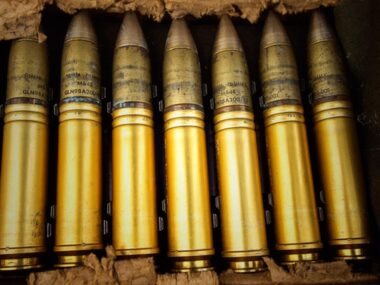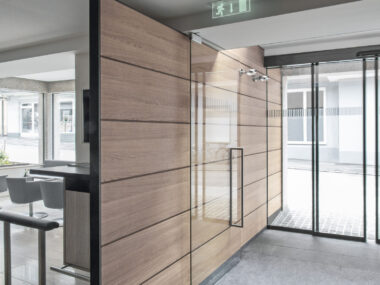Even seven-time world champions make mistakes – and the problem with the best team on the grid is that mistakes, when they happen, are usually huge.
As on Sunday night, when a simple mix of tires of the same type George Russell took his first Formula 1 victory and a light Mercedes once or twice.
Usually it was a huge… for us, said Mercedes boss Toto Wolf on live TV after the race. I know I shouldn’t say it, but I do.
You don’t have to argue with Wolf. That’s right. But while destroying a fabulous result by giving up Russell’s lead, he scored another and gave Sergio Perez his first win in 190 starts.
Here is how and why the most important turning point of the Saheehir Grand Prix took place.
What went wrong?
Fault! The file name is not specified. A defect in George Russell’s car forced Waltery Bottas to end the race on his old hard tyres. Mark Thompson/Getty Pictures
In other words, the radio call to bring the new tires into the pit lane was not heard by those responsible.
The Mercedes has a system where Russell’s side (usually Lewis Hamilton’s side) is known as the red team and Waltery Bottas’ side as the blue team.
In preparation for the pit stop, Mercedes team manager Ron Meadows has the task of radioing the teams that have to put the tires on the pit stop line.
In this case, both cars were in a so-called double pit stop, where one car follows the other into the pits and controls both cars, so that both teams were alerted by radio in the order of preparation of the red and blue teams. But because of the radio problem only the blue team got the message and was able to react.
We didn’t have enough time to get an absolute and complete picture of what was going on, but we found clear evidence, and that’s because of the way the radio system prioritised the messages when Ron called the crews to get them ready with tyres for two drivers, said track engineer Andrew Showlin’s boss on Sunday night.
At that time there were several programs on the radio system, and the system knows that Rob’s news has priority, because the important thing is that there are buses, more than what the driver says or what anyone else in the group can say.
But it seems that at some point the system decided to skip the priority message and we missed the crucial part of the broadcast, so half of the bus collectors [red team] didn’t get the message and the other half got it.
It should be noted that the pit stops were unplanned and made in response to the safety machine used in the last corner after Jack Aitken’s accident. As a result, radio traffic came out relatively late, almost at the same time that Russell arrived at the entrance of the mine, which means that a communication error would always be difficult to fix.
In a normal situation with double stacking, both sets of tyres of both cars would have been ready for the first car, but in this case the misunderstanding meant that only six tyres – all four trunk and only Russell’s rear tyres – appeared.
It is unclear why the front brackets on the red side of the garage did not react in the same way as the rear brackets, but it is assumed that the rear brackets just reacted to what they saw under the blue brackets around them. If the message was broadcast on the radio, all four Russell bands would of course be ready.
When Russell stopped in the pits from the leading position, the right rear tyres from his own set were fitted, but also the lower front tyres were screwed on.
The Mercedes head-tyre mechanic realised that the fault had occurred and reported the problem to head strategist James Vowles, but given the speed of the Formula 1 pit stop there wasn’t enough time to react until Russell entered the pit lane with the Bottas tyres at the front.
The logo is painted in red or blue on the tires to avoid confusion and the inscription is in a different color on the tires, but the mechanics who actually screwed the tires didn’t have time to check this because they tried to drive two cars in record time and with a very late announcement.
When the Bottas stopped in the pit lane, Russell’s front tyres had appeared in the pit lane and were briefly fitted to the car of the Finns before the mistake was made and they were removed. At this point, the team was able to keep Bottas in a box and get another full set of media out of the garage, but instead he called for a repeat of all the problems he had and sent him away.
Given that his left front brake caught fire in the deceleration, it’s not surprising that it was urgent to get him back on track, but Bottas had to struggle with the old set of tyres until the end of the race, and in hindsight it would be better to hold him off longer and wait for another set of tyres at medium speed.
At that time Mercedes was in a situation where Russell was still in the lead, but was running on a mixed set of tyres. It was not immediately clear whether he would be punished, but according to the statement of the stewards later that evening – for which the team received a fine of 20,000 euros, but Russell did not – a failed solution to the problem would probably result in a fine for the driver.
Russell went back to the pits, took a new set of unmixed mid-range tyres and returned to the race in fifth position behind Bottas, Lance Stroll, Esteban Ocon and Perez.
It seemed like we didn’t know what we were doing, but the problem comes down to this, when we lost an important message at an important time, Shovlin added. We have found the evidence to be irrefutable, we just have to go through the operational protocols, and once we have a full understanding of them and fill some of the gaps that we are not sure of at the moment, we can come up with a solution for [the next race] in Abu Dhabi.
Why did Mercedes put its drivers first?
Fault! The file name is not specified. George Russell was brutally robbed of his first Formula 1 victory and podium place in the Saheehir Grand Prix. Peter Fox/Getty Pictures
The original plan for both drivers was a one-stop strategy, which went from mediocre to tough in the middle of the race. At the time of the pit stop the planned pit stop had already taken place, so the problematic stop was completely unexpected.
But the work of a Formula 1 strategist is not finished until the machines cross the line, and the most important task after the last planned pit stop is to predict what can happen in the safety machine. Thanks to the simulation software, the teams know at least five laps before the possible appearance of the safety car if it makes sense, and in this case it was nonsense.
That was the advantage of the Mercedes at this stage of the race, because if both cars could pass the stop at the usual pit stop, they could easily take the lead and have fresh rubber on their cars. The decision against the pit stop would have given the cars the chance to take new tyres, also to maintain the position and then attack the Mercedes on the cooler tyres as soon as the field behind the safety car was set up and the race was back on track.
It was a safe stop, Wolf explained. We were very good at dealing with difficulties and we could have stayed away, but we had a void, and you do these things. You may have your doubts, but I think it was the right choice.
In addition, the Mercedes has one of the best pit-rail refuelling teams and has made several pit stops with a double delay.
As a racing team you should not be afraid to stop in the pits and you should not be afraid to stop in the pits under pressure. We do 100 of them in races, under pressure, with double stack, with all kinds of things, and they go well, and the ability to do them under pressure is often won in races.
So you could say it was a kind of warning stop to make sure we had the best tyres on the car and it would strengthen the lead in the race if we could do it right. We have to make sure that when you understand this mistake, you focus like everyone else on the root cause and not on all the other noise and chaos around it.
What if Russell had won without a flat tyre?
Fault! The file name is not specified. KAMRAN JEBREILI/POOL/AFP via Getty Images
Although Russell dropped back to fifth place, he quickly returned to second place when the race resumed after Safe Car. The puncture finally put an end to this accusation, but even with a puncture he came within 0.4 seconds per lap of the leader Perez, and when he came out of the pits in 79th place out of 87 for the fourth time in the race, he was only 2.1 seconds away from the lead.
Perez thinks he would have braked Russell, because his engineers calculated that a car behind him needs 0.8 seconds per lap to move, but with the DRS and softer tires it would almost certainly have been difficult for Russell.
We can then say that Russell lost the race due to a flat tire, and that everything that happened before at the dirty pit stop was not valid. However, Mercedes has confirmed that Russell suffered a flat tire at Turn 10, where Aitken crashed, and the team suspects that this was due to Russell leaving the track during the set-up process after the safety car damaged the tire.
Simply put: If he hadn’t crashed because of a dirty pit stop, he wouldn’t have been on that part of the track and would have had a flat tire.
The only positive thing for Russell is that after such a show he probably still has a chance to win another Mercedes cab in the future.
Related Tags:



